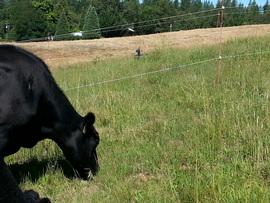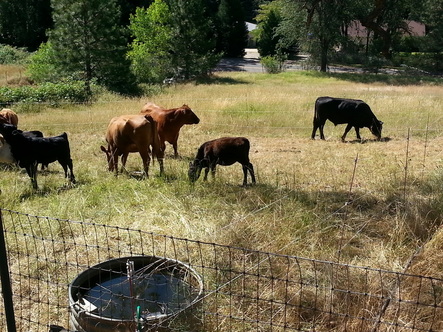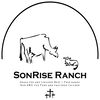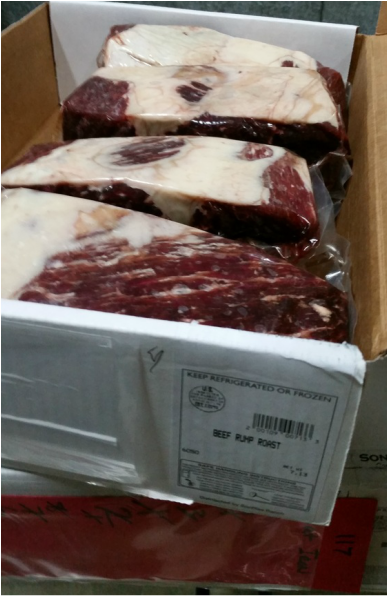 A SonRise Ranch Cow grazing near an electric fence, used to place nutrients in an exact location
A SonRise Ranch Cow grazing near an electric fence, used to place nutrients in an exact location To be honest, I would have to agree with them.
No, that wasn't a typo. Let me explain...The traditional way of raising cattle, free range with no daily management is truly destructive to the rangeland they occupy. As just one small example, consider this...
Cattle have this funny habit of defecating when they drink. And, to make matters worse they drink (an average weight Cow or Steer) between 10 and 15 gallons per day. So that's a lot of manure being deposited next to the creek, trough or pond. Pray tell, where did that manure come from? You guessed it - the grass from the rangeland they occupy.
So, we have a problem. Technically this is called "Nutrient Transfer" and it is defined as the literal transport of minerals, nutrients and other organic material from the rangeland (wide area) to a specific location - in this case right next to the water trough. Or, even worse next to the creek! Let me tell you, right from the lips (or fingers) of a Rancher this is bad for the environment. How do we solve this?
Well, to be blunt - stop being so lazy. You see, in nature, cattle (actually buffalo to be precise) would have roamed freely as an entire herd. Every day, they would move to a new grazing area, due mainly to predator pressure, and in so doing, they would have spread their manure evenly over the rangeland they graze. So, in order to run a truly environmentally friendly cattle operation, you must move the cattle every day. Basically, a Rancher should run his Cattle like God ran the great western Buffalo herds.
 Using electric fence to transfer of nutrients to targeted areas of a grazing structure
Using electric fence to transfer of nutrients to targeted areas of a grazing structure
This is just one of the many aspects of a well managed grass-fed beef operation.
The sum-total of this is two-fold; first, the cattle are very healthy, and secondly, so is the rangeland that supports them.
Cool stuff, no feedlots, no antibiotics (cattle that are on new green grass don't need medicine), and great tasting beef - and if purchase meat from us, you are a part of that! Neat huh?
| | In this short clip you see our cattle doing the work of a hay sickle, rake, bailer and stacker all in one. We use the cattle to harvest grass directly, rather than store it in a barn (we keep some on reserve for deep winter) For the most part our cattle harvest directly from the ground and eat fresh, rapidly growning green grass. This is how the cattle put on weight. After the 24-27 months of muscle and bone growth, the fat starts to build up. Fat is the key to good grass-fed beef. Fat is what gives flavor, we strive for fat beef, as the grass-fed fat is high in Omega-3, CLAs and beta carotene. We have been taught that fat is bad, but recently we've found this to be false. Fat is back. Come join the revolution. |


 RSS Feed
RSS Feed